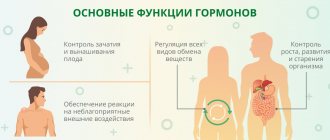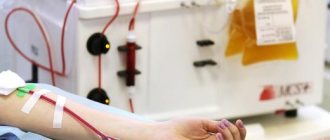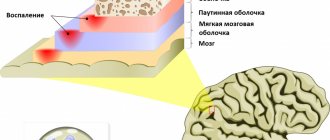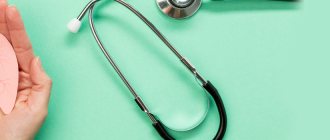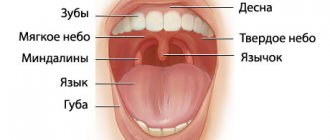Can only be used as prescribed by a doctor
It is very important to take antibacterial agents only in cases where you cannot do without them. It is unacceptable to take medications on your own initiative. Indications for the use of antibiotics include various symptoms of infectious diseases that cannot be treated on your own:
- Prolonged high temperature.
- Purulent processes.
- Exacerbations after pathologies of a bacterial nature.
- Disturbance in the structure of the circulatory system. There is an increase in the level of white cells, an increase in ESR and other characteristic signs indicating inflammation.
It is worth remembering that antibacterial agents are not effective against viruses. Therefore, this pharmacological group is not prescribed to patients to combat influenza, ARVI, and intestinal infections.
When are antibiotics needed?
The chief specialist of the Altai Territory in preventive medicine, head of the department of faculty therapy of ASMU, Professor Irina Osipova agreed with her colleague and listed the signs of a bacterial infection in which it is necessary to contact the attending physician to resolve the issue of prescribing antibiotics:
– the appearance of yellow-green sputum;
– the appearance of severe shortness of breath;
– repeated rise in temperature;
– low saturation.
October 23, 19:19
Barnaul residents storm pharmacies in search of antibiotics and antivirals
The epidemiological situation in the region is tense to the limit. Buyers are feverish, they rush from one pharmacy to another in search of antiviral and antibiotics
Saturation (oxygen saturation in the blood) is measured with a special device - a pulse oximeter. If it is not there, you need to determine your breathing rate. More than 22 breaths per minute is a reason to consult a doctor.
Experts recommend assessing the repeated rise in temperature 48-72 hours after normalization. A persistent high temperature (above 38.5 degrees) for more than seven days is also a cause for alarm. The period of 6-8 days of illness is indicative: it is at this time that it becomes clear whether a person is recovering or developing a complication.
Since coronavirus infection does not cause symptoms in most patients that would warrant hospitalization, doctors consider the rush due to the lack of antibiotics to be a consequence of unnecessary panic.
Accounting for medications used
It is advisable to keep records of all antibiotics used. Namely, it is worth recording the duration of the course, the name of the medicine, when it was taken and for the treatment of what disease. This is recommended not only for children, but also for adults.
During use, you need to take into account the body’s reaction to the drug, the development of possible side effects, and allergies. This will help the doctor adequately assess the situation and prescribe the most effective antibacterial agent.
It is also important to warn the specialist about the use of additional drugs that have been used recently or currently.
“The likelihood of detecting the virus is reduced.” When to take a PCR test
Rospotrebnadzor explained false negative PCR tests for COVID-19. A false negative test result for coronavirus can occur due to the fact that an infected person takes the test in the later stages of the disease. This opinion was expressed in Rospotrebnadzor. They emphasized that the chance of getting such a result in a patient with COVID-19 increases after the fourth or fifth day of illness.
When infected with COVID-19, the patient does not have specific signs that are characteristic only of this infection. Most often, the infected person experiences respiratory symptoms, which can indicate not only coronavirus, but also a number of other diseases, including influenza and ARVI.
For this reason, PCR testing remains the only way to diagnose coronavirus. However, in a fairly large proportion of cases they turn out to be unreliable, as experts from the Ministry of Health said a year ago, pointing out that 30-40% of tests give a false negative result. In particular, it was then believed that in most cases this was influenced by errors in collecting the material and the quality of the test itself.
However, there is another rationale. According to the Deputy Director for Clinical Analytical Work of the Central Research Institute of Epidemiology of Rospotrebnadzor, Professor Natalya Pshenichnaya
, the result of the analysis is affected by the period of illness during which the sick person takes the PCR test. In the early stages of the disease, getting a positive result is much higher.
“After the fourth or fifth day of illness, the likelihood of detecting the virus in the nasopharynx decreases, and respiratory symptoms may be at their peak at this time. If testing is carried out within this time frame, you can get a negative result,” RIA Novosti quotes a specialist as saying.
The overall picture of testing for COVID-19 is also complemented by the fact that vaccinated people also appear among new cases, but they shed the virus in smaller quantities and for a shorter period of time, stated the deputy director of the Moscow Research Institute of Epidemiology and Microbiology named after G. N. Gabrichevsky Tatyana Ruzhentsova.
However, any test system can give questionable or false results. Experts have repeatedly expressed the opinion that false results for coronavirus are associated with both errors by health workers and patients. In other words, we are talking about non-compliance with testing rules and recommendations.
Another version was put forward by the director of the Institute of Medical Parasitology, Tropical and Vector-Borne Diseases of Sechenov University Alexander Lukashev
. He told the Izvestia newspaper that COVID-19 is a specific virus in the sense that it may not be detected in the available biomaterial. While other coronaviruses multiply in the nasopharynx and oropharynx, where they can be easily found, SARS-CoV-2 is present only in the bronchi in a significant proportion of patients.
According to the World Health Organization, the accuracy of PCR tests for coronavirus, despite their controversial assessment, is 95%.
At the same time, WHO emphasizes that many factors influence test results. This applies to the process of collecting material, transporting and storing biomaterials. It is also important whether the patient is properly prepared for the test and whether the test system has been tested in a specific laboratory.
Link to publication: rambler.ru
Taking probiotics
Everyone knows that antibacterial drugs have a detrimental effect on the intestinal microflora, especially with long-term use. Therefore, during the course of treatment you should additionally take probiotics and consume various dairy dishes. It is advisable to take such medications between intervals of taking the main drug.
Effective representatives of probiotics: Linex, Bifiform, Acipol, Normoflorin. It is advisable to consult a doctor about choosing the appropriate remedy.
Grodno University Clinic
Why you don't need antibiotics for coronavirus
A patient with coronavirus or some other viral infection needs antibiotics only when a bacterial infection also develops against the background of this disease.
Typically, there will be no need for antibiotics during the first few days of illness. For Covid, the addition of a bacterial infection is not typical. Many international recommendations, as well as the latest recommendations of the Ministry of Health of the Republic of Belarus, clearly state that before prescribing antibiotics, it is necessary to confirm the presence of a bacterial infection. The use of antibiotics from the first days of the disease is not supported by either logic or recommendations. This will not work, and can only cause harm, worsening the course of the disease.
It should be emphasized that even if pneumonia is diagnosed by MSCT of the lungs, it has a completely different nature of inflammation than with bacterial damage to the lungs, and is not treated with antibiotics.
What are the dangers of taking antibiotics, besides side effects?
Antibiotics often affect liver function, heart function, and some can suppress the immune system, reducing the number of white blood cells (blood cells responsible for immunity) and the number of beneficial bacteria in the intestines, also responsible for immunity.
It is necessary to remind once again that if patients independently take antibiotics without indications, and do this often, then the bacteria acquire resistance (resistance) to the drug: they are able to exchange information about resistance with each other, which can ultimately lead to dire consequences , namely, the lack of effect of antibiotics when it becomes vitally necessary.
How to determine that a bacterial infection has been added to Covid?
A doctor's examination is very important! So that he collects an anamnesis: if there are any chronic diseases associated with a purulent infection, for example, chronic bronchitis, tonsillitis, bronchial asthma, sinusitis, sinusitis, then the patient may need antibiotics, but also not always.
It is important to get tested. By deciphering the formula for a general blood test, you can figure out what kind of infection the patient has - viral or bacterial. Today, even more modern biochemical parameters have appeared that make it possible to determine whether there is a bacterial infection or not.
To make the right choice in treatment tactics and choice of antibiotic, you need an integrated approach that only a doctor can implement!
Don't self-medicate! Previous Next
A little bit of history
One of Alexander Fleming's early works showed that sensitive bacteria can “get used” to penicillin in laboratory conditions. In 1945, when he was awarded the Nobel Prize, Fleming told the story of an imaginary patient who had a sore throat caused by Streptococcus pyogenes and who took a shorter course of penicillin than required. This led to transmission of the infection - already in a resistant form - to his wife, who did not respond to therapy. Fleming concluded: “If you are taking penicillin, use the full course.” It's funny, but Streptococcus pyogenes never shows resistance to penicillin.
Relationship between duration of antibiotic therapy and resistance
- Traditionally, recommendations determine the duration of antibiotic use. However, for most drugs, studies have not been conducted to determine the minimum effective treatment period. For example, pyelonephritis is historically treated for 2 weeks. At the same time, clinical studies have proven that a longer period of fluoroquinolones is effective (7 days for ciprofloxacin and 7 days for levofloxacin), but similar work has not been carried out for β-lactam antibiotics, which are most often used in the treatment of pyelonephritis. Looking at current international guidelines, a course of β-lactam antibiotics should be 10–14 days, based on the simple lack of data on the effectiveness of shorter periods of therapy.
- On the other hand, randomized clinical trials have shown that a shorter period of therapy in patients with hospital-acquired pneumonia is similar in clinical outcomes to a longer course, but is associated with a lower risk of recurrent infection and antibiotic resistance.
- The concept of a universal antibiotic course duration does not take into account that patients respond differently to the same drugs. Recently, the situation has changed dramatically in hospital practice, where the decision to discontinue therapy is increasingly based on biomarkers such as procalcitonin. It is not always possible to perform such tests in an outpatient setting, which is why some experts are inclined to think so. that patients can stop therapy when they feel better. Of course, this statement contradicts the WHO recommendation. But, interesting are the results of a recently published study showing that using temperature resolution as an indicator of cessation of therapy in patients with community-acquired pneumonia reduces the duration of treatment by 2 times without affecting the success of therapy.
Thus, clinical studies are required to determine the most effective strategies for optimizing the duration of antibiotic therapy.
Source
: Martin J Llewelyn, Jennifer M Fitzpatrick, Elizabeth Darwin. BMJ 2017;358:j3418.
